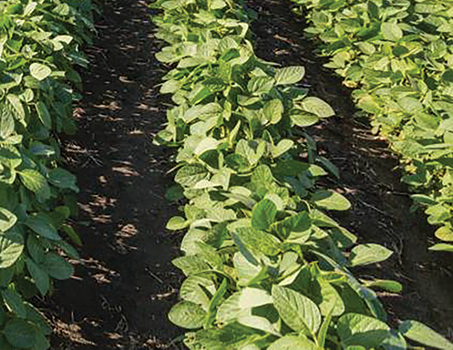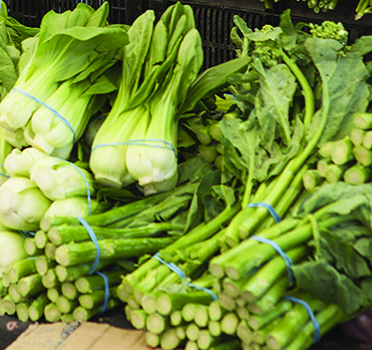The Ugly Reverse Logistics Supply Chain
By Dr. William Oliver Hedgepeth, American Public University
Ugly fruit is still good
Have you gone to the grocery store and passed up an apple that had a bruise on it, even if it was marked down significantly? How about a mis-shaped carrot with several root ends growing, making it look almost demonic? Do you buy ugly fruit and vegetables? Many people do; many do not.
Ugly produce is here, maybe
Grocery stores such as Wal-Mart, Price Shopper and Whole Foods have been experimenting with selling ugly fruits and vegetables. This is produce that would normally be wasted; sent to the trash can and then to the city landfill. The amount of produce that goes to trash is over 6,000,000 pounds yearly. There is not a reverse logistics practice for fruit that is not the perfect color or shape that consumers are used to buying.
How did it start?
This food reverse logistics effort started in 2014 with a company called Intermarché. They sold not only ugly fruit and vegetables, but also ugly cookies. Yes, cookies. Would you want a round chocolate chip cookie or one that is mis-shaped a bit, but, cost a lot less than that perfect looking cookie? This reverse logistic effort seems to be a big hit in Europe, calling it the “return of unsightly fruit.” The statistics indicate that farmers are the ones who really suffer having to toss out up to 40% of their crops that are not perfect as the grocery stores and us customers demand. A TV commercial used to entice customers to shop for the near perfect produce call these food items, “the grotesque apple,” “the failed lemon,” “the disfigured eggplant,” “the ugly carrot” and the “unfortunate clementine.”
Food wars have started
It appears that while humans like diversity and equality for all, in the food business, all food is not equal. We now have food justice advocates. Really. These “Food-justice advocates argue that profit-based solutions are unequipped to do battle against food inequality, and that even well-meaning companies could do real harm to community organizations.”
Texture versus ugly magic
Now, outside of produce, there are some really interesting food dishes served in restaurants around the world that might cause you to put your folk down, or not pick it up. One is with seafood. Have you heard of stargazy pie? Imagine a pie in front of you, but not an apple pie made with ugly apples, but, a fish, such as small herring, baked within in the pie. It is a fish pie. So far, so good. Only the heads of all the little herring are sticking out of the pie crust, staring at you with their eyes looking up at you. If the chef is really imaginative, they will have a few tails sticking up as if they are just swimming around the crust. The inside of the pie is full of custard, brine, bacon, hard-boiled eggs and maybe some mustard. Yummy. Now, for this writer, that is ugly food. But then I am not from the culture that praises the stargazy pie, which is the “coastal village of Mousehole, Cornwall” in England. I am sure those herring looked just like herring and were not ugly like some produce we are discussing. So, there is an ugly side to the cooking as well as the purchasing.

But the taste and texture are what seems to matter the most, not the ugliness of the item being purchased or the weirdness of the food fully prepared as with our herring dish. In the book, Mouthfeel, it states that what we taste with our tongue and how food crunches or feels is what really matters, not the appearance of the produce or chocolate or seafood or meat. It seems that “Our sense of taste produces physical and emotional reactions that cannot be explained by chemical components alone.” Do you like the taste of that fresh baked doughnut when Krispy Kreme turns on that red sign that declares Krispy Kreme, Original Glazed, NOW? Would you purchase one that was really twisted and not that perfect round shape we know and love? I called my local store. They will not sell me ugly doughnuts.
When the shopper in your family goes to the grocery store or the farmers market, or stops by a roadside produce stand, do they look for ugly items? Do they care? Many produce items from the local farmers are not the prettiest. They don't really care that the carrots have two or three roots hooked together instead of the one, or that the cucumber is mis-shaped or a bit too small or too large, or that the pumpkin is lopsided, or the peaches and apples are not that pretty color you expected. But who cooks in the family? Does that matter to them, in the purchase of all these produce items? When an ugly potato is made into mashed potatoes with gravy on top, do the folks around the table care that the potato had an ugly face? There is a bit of magic going on at the dining table when the food is served. The ugly food challenge is really not to your eyes but to your tongue, your taste, that texture of what you put inside your mouth.
The ugly supply chain is hidden
The farmers are selling their ugly foods produce to food manufacturers. Those pies that you see at the grocery store in the freezer compartment or stacked on the table or for sale at your local gas station are all mostly likely including ugly fruits. Farmers sell their produce by the ton, hundreds of tons to companies that turn all those items into mouthwatering pies, cakes, cookies, bags of frozen chopped vegetables. That means all the ugly looking and not perfect shaped apples, carrots, peas, corn, etc., goes into huge storage containers. Trucks, trains and ships carry those containers to factories for manufacturing your morning cereal or cakes and pies. A food producer has many supply chains. While in the US, our produce goes to local food manufacturers and bakeries, there is a significant amount of other ingredients that come from sources outside the US. Sugar may come from sugarcane form from many sources, such as from Bolivia, Brazil, India, Thailand, the USA, Pakistan, Mexico, Russia, Australia and many other countries. Vanilla comes from many places too. But, about 80% of it comes from the island nation of Madagascar, from the vanilla orchid plant.

But there is an ugly side to our food supply chain that is not the outer appearance. The food supply chain has too many areas of contamination that enters that world. The supply chain is long and complex and hard to see in many cases. Those plastic bottles that are in the oceans and lakes where our seafood comes from can actually get inside the body and blood stream of the sea creatures. That waste plastic is not just an environmental hazard as Coca Cola is working to fix, but a biological hazard to the food we eat. It is a hidden supply chain problem. These various plastics thrown away create a host of microplastic particles that eventually end up within the seafood, and then in humans. Research is still in its infancy, but reports are showing up that say, “the potential accumulation of microplastics in the food chain could have adverse effects on human health like other chemical contaminants relevant to food safety.” The US Government and others in the food supply chain business are alert to this ugly side of our food supply chain and manufacturing of foods for humans. In the US, a 2019 report estimates that “48 million people in the United States alone get sick from contaminated food.”
Buy Local
When you purchase those ugly carrots and the pretty ones from your local farmer, you are helping your family have a healthier life, a healthier mind, body and soul. When you know that the produce is from within 50 miles or so of your house, you should feel that the food is fresh and rich in nutrients that are not laced with pesticides that are legal in the US, but not in other countries. Buying local also helps that food supply chain overall by cutting down on pollution from trucks, ocean shipping, rail and air transport of those food items. If the supply chain is from the farm field to the farmers front yard, the longest part of the supply chain is the round trip from your home or office to the farmers' market. Also, that food contamination issue is gone. The local farmer is looking after his community of customers as well as their own family. Choose to buy local. Ugly is beautiful for your body, mind, soul, your kids, your grandparents, and any visitor from Cornwall, England.
 Dr. William Oliver Hedgepeth
Dr. William Oliver HedgepethDr. Oliver Hedgepeth is a full-time professor at American Public University (APU). He was program director of three academic programs: Reverse Logistics Management, Transportation and Logistics Management and Government Contracting. He was Chair of the Logistics Department at the University of Alaska Anchorage. Dr. Hedgepeth was the founding Director of the Army’s Artificial Intelligence Center for Logistics from 1985 to 1990, Fort Lee, Virginia.